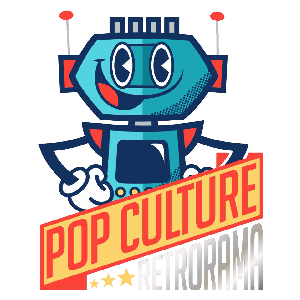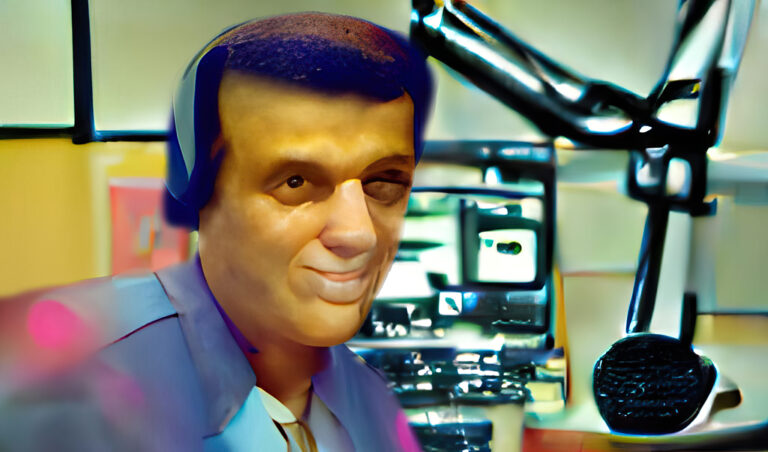Part one of a brief history of one of the BBC’s best sci-fi TV exports – a show so influential that it started the sea change that has washed over all of TV sci-fi today.
Terry Nation, like it or not, was a former comedy writer now forever pigeonholed as a science fiction writer. His first TV sci-fi script, for a 1962 episode of the ABC (as in Associated British Corporation, not American Broadcasting Corporation) anthology series Out Of The Unknown, was a half-hour adaptation of a Philip K. Dick story; a year later, after being fired from his regular joke-writing gig for TV comedian Tony Hancock, Nation turned in desperation to Doctor Who…and the result was the Daleks, a very merchandisable menace that made Nation a very rich man. Desperation, as it turns out, was a pretty good source of inspiration.
In 1975, Nation had already left his latest creation, the harrowing BBC pandemic series Survivors, over constant disputes with the producer assigned to the show, Terrance Dudley. Nation was content to keep earning royalties from having created the series, but left it behind for Dudley to run as he saw fit, tired of a full season’s worth of behind-the-scenes tug-of-war. In September, though, Nation was due back in the offices of the BBC brass, where he was expected to pitch more ideas for more shows, since he was no longer involved with Survivors on a day-to-day basis.
And once again out of desperation, Nation rattled off a story outline involving a group of criminals in a powerful spacecraft of unknown origin, taking arms against a fascist Earth government that wanted them dead. Forced together by circumstance, the characters wouldn’t necessarily get along on either the macro (ideological) or micro (this week’s plotline) scale. Pressed for further details, Nation – who was tap-dancing for his future writing career – said that the show was called Blake’s 7, and that it would be something like “The Dirty Dozen in space.”

If anyone else had made such an off-the-top-of-their-head pitch, there might have been some polite glances around the table before they were shown out. But this was Terry Nation. The Dalek guy. The Survivors guy. Give that man a series order!
But also give him the Monday night time slot that had already claimed the life of the police drama Softly, Softly Task Force, and only give him the same budget as the police drama with which to make a powerful spacecraft of unknown origin. No problem, right? This is Terry Nation. He’ll make it work.
As work progressed on the show, Nation ended up mostly-writing all thirteen of the first season’s script – or at least that’s what the on-screen credits would reflect. The truth is a bit more complicated: writer Chris Boucher, who had created the popular character of Leela in a well-regarded 1977 Doctor Who story, was hired to serve as Blake’s 7’s script editor, and often found himself “filling out” somewhat skeletal scripts that Nation started…but didn’t quite finish.

Nation’s dark futuristic dystopia was taking shape, however: Roj Blake, a former revolutionary subjected to a mind-wipe after being captured, breaks through the blocks placed in his memory when he witnesses a massacre of Federation citizens gathering to discuss a simple campaign of civil disobedience. Upon learning that Blake is again becoming dangerous, the Federation whips up some false charges as an excuse to send him to the prison planet Cygnus Alpha for the rest of his life, where the population of common criminals will probably dispatch him more effectively – and less publicly – than a Federation firing squad would. As a prison ship is taking Blake and a number of other convicts to Cygnus Alpha, the ship encounters the remnants of a space battle, including a massive ship that isn’t the product of Earth technology. The prison ship’s captain sees an opportunity to rake in a salvage free that would make him rich enough to never have to fly a prison ship again…but the first two members of his crew sent to board the derelict die horribly. Solution? Send prisoners to board the ship, at gunpoint. Blake, convicted smuggler Jenna Stannis, and Kerr Avon, a brilliant but utterly amoral computer hacker busted in the midst of a daring attempt to defraud the Federation banking system to the point of collapse, are sent to find out what happened to the previous boarding party, only to encounter an automatic defense system that uses their own memories against them – as it did the two dead prison ship guards. But Blake, all too aware pf his recent discovery that some of his memories were implanted, sees through the mind tricks and disables the automatic defense system. After a short firefight with the prison ship’s first officer, Blake closes off the airlock, and Jenna – an ace pilot – is able to take control of the unknown ship. Naming it the Liberator, they now have a weapon with which to fight back and free their fellow prisoners.

This all unfolds across the first three episodes, which points out the major sea change in sci-fi storytelling that Blake’s 7 truly represents: this was the first live-action sci-fi series to carry storylines across an entire season, building up to something bigger. Beginning with shows such as Babylon 5 and Buffy in the ’90s, and carrying through to 21st century series such as Battlestar Galactica, Lost, and virtually everything that’s come down the pike since Battlestar Galactica or Lost, this is a perfectly normal thing to expect a science fiction show on TV to do.
They all do it now. Blake’s 7 was the first. (For the record, J. Michael Straczynski, creator of Babylon 5, owns up to being a Blake’s 7 fan and admits that it’s an influence on Babylon 5.)
Later first-season episodes introduce the scheming, politically ambitious Federation Supreme Commander Servalan, who dispatches the ruthless Space Commander Travis – permanently disfigured in a battle with Blake during Blake’s earlier rebellion – to bring Blake and crew in, dead or alive. The end of the first season builds up to a race between the Liberator crew and the Servalan/Travis team to acquire a rumored supercomputer supposedly capable of accessing any system in the Federation; that adventure sees the Liberator crew walk away with the prize, a temperamental machine called Orac, but then leads into the equally surprising revelation of the cyborg-like builders/owners of the Liberator. Season 2 sees a build-up to the discovery of a top-secret hidden installation from which the entire Federation computer network is controlled, affecting everything from space traffic to climate control on hundreds of planets. If only Orac could be plugged into that…

Doctor Who was doing multi-part stories from its very first season, but each four-or-six-or-seven-part story within each season tended to exist in isolation, with occasional scenes to tie one story into the next added by that series’ story editor. Blake’s 7 was consciously constructed to tell a story on a larger canvas, though this happened haphazardly at times, especially once Nation once again left his creation, this time to seek his fortunes in the United States. A Nation script initiated the second season of Blake’s 7, but a script credited entirely to Chris Boucher ended that season. Blake’s 7 also introduced the Massive End-Of-Season Cliffhanger that’s practically expected of any series in the genre today.
Another innovation Blake’s 7 brought to small-screen sci-fi was its morally ambiguous characters. Avon makes little secret of the fact that he’d very much like to ditch Blake and keep the Liberator for himself; several of Blake’s comrades mention more than once that they’d prefer hiding out to taking on the Federation in direct combat. After two seasons of fighting the Federation, even Blake himself has cause to question whether he’s a freedom fighter, or just the terrorist that the wanted posters say he is (this element – our heroes being considered terrorists – is probably the one thing that has kept Blake’s 7 from being remade/rebooted in a post-9/11 world). In the second season, not in the cliffhanger but much earlier, one of Blake’s crew dies tragically, the victim not just of their Federation pursuers, but also of the fact that Blake just didn’t plan things out very well. The rest of the crew has to stop and consider if Blake is who they should be following.

The cast was impressive; Gareth Thomas, late of Star Maidens and Children Of The Stones, brought real moral heft to Blake’s obsessive quest for justice, while Paul Darrow made his career with Avon’s never-ending displays of dry wit and ruthlessness. Since Avon wasn’t the hero of the piece, he was allowed to be even more morally ambiguous than Blake, and in some ways become the more interesting character by default. Darrow’s fame relied on this; Gareth Thomas noticed it too, and, already worried about typecasting, declined to renew his contract after the second season aired in 1979. This wasn’t entirely unprecedented – after making an incredible impression as Travis in season one, Stephen Grief bowed out as Travis, who was recast in the form of Brian Croucher, an actor to whom fandom hasn’t been entirely kind in retrospect, despite being handed the unenviable task of recreating a fan favorite.
But you couldn’t have a show called Blake’s 7 without Blake, could you?
In the best Blake’s 7 tradition, I’ll just say…to be continued.




+ There are no comments
Add yours